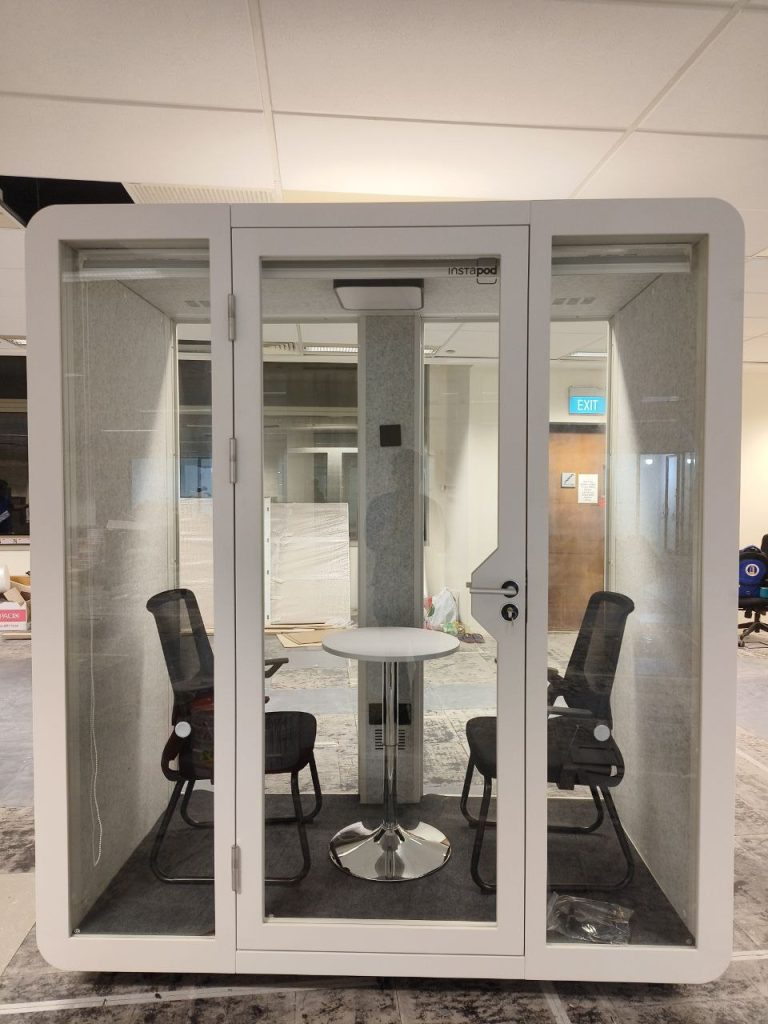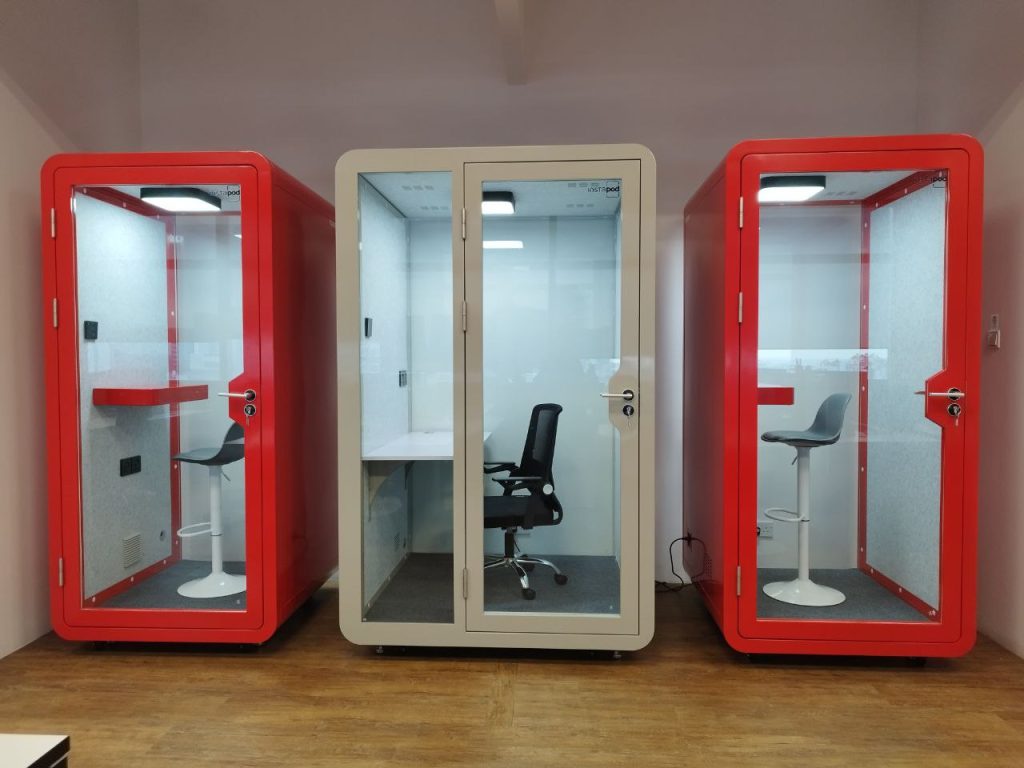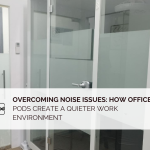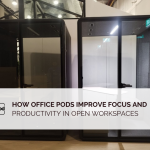No pods added to your quote request yet. Add some now for a free quote!
The Role of Office Pods in Modern Office Architecture

In the evolving landscape of modern office design, one of the most notable innovations is the office pod. These compact, self-contained units have become a staple in contemporary office spaces, addressing a range of needs from privacy and focus to collaboration and flexibility. As the nature of work continues to transform, office pods are emerging as crucial elements in modern office architecture, reshaping how we approach work environments.
The Rise of Office Pods
Office pods, sometimes referred to as “meeting pods,” “phone booths,” or “focus rooms,” are standalone units designed to provide privacy and seclusion within an open-plan office. Their popularity surged in response to the growing demand for spaces that cater to diverse work styles and needs. The traditional open office layout, once celebrated for its collaborative potential, has faced criticism for issues related to noise, distractions, and lack of privacy. Office pods offer a practical solution to these challenges, making them increasingly relevant in modern office design.
Design and Functionality
The design of office pods is as diverse as the needs they address. They range from sleek, minimalist structures to more elaborate setups featuring advanced technology. Typically, office pods are soundproofed to block out ambient noise, making them ideal for tasks that require concentration or private conversations. Some pods come equipped with ergonomic seating, adjustable lighting, and ventilation systems to enhance comfort and productivity.
A key feature of many office pods is their modularity. These units can be customized and reconfigured to suit various functions, whether it’s a space for a quick phone call, a private meeting, or a focused work session. Their flexibility makes them a valuable addition to dynamic office environments, where the ability to adapt to changing needs is crucial.
Enhancing Productivity and Well-being
One of the primary benefits of office pods is their impact on productivity. By providing employees with a quiet, private space, office pods help minimize distractions and interruptions, which can significantly enhance focus and efficiency. In open-plan offices, where the constant activity can be overwhelming, office pods offer a retreat where employees can concentrate on complex tasks or engage in thoughtful reflection.
Moreover, the presence of office pods can contribute to overall employee well-being. Privacy is a fundamental aspect of mental health in the workplace. The ability to step away from a bustling open space and into a secluded pod allows employees to manage stress and maintain their well-being. This can lead to higher job satisfaction and lower levels of burnout, which are crucial factors in retaining top talent.
Supporting Collaboration and Innovation
While office pods are often associated with privacy and concentration, they also play a role in fostering collaboration. Many modern office pods are designed to accommodate small group meetings or brainstorming sessions. Their compact size encourages more intimate discussions and can facilitate quick, efficient collaboration away from the noise and interruptions of larger meeting rooms.
Furthermore, the flexibility of office pods means they can be used for a variety of purposes beyond individual work. For instance, some pods are equipped with video conferencing technology, making them ideal for remote meetings or virtual collaboration. This versatility supports the hybrid work model, where employees split their time between remote and in-office work.
The Future of Office Pods
As the future of work continues to evolve, office pods are likely to become even more integral to office design. Advances in technology may lead to more sophisticated pods equipped with smart features and enhanced connectivity. Additionally, the emphasis on sustainability in office design may result in eco-friendly pods made from recycled or sustainable materials.
Office pods will also need to adapt to the changing dynamics of work, including the rise of remote work and flexible schedules. Designing pods that can seamlessly integrate with virtual work environments and support a variety of work styles will be essential for their continued relevance.
Conclusion
Office pods represent a significant shift in modern office architecture, addressing the need for privacy, focus, and flexibility in today’s diverse work environments. By providing dedicated spaces for concentration and collaboration, they enhance productivity and employee well-being, making them a valuable addition to any contemporary office. As we move forward, the role of office pods will likely expand, reflecting ongoing changes in how we work and interact in the workplace. Their adaptability and innovation ensure they will remain a key feature in the design of future office spaces, shaping the way we experience work for years to come.
Check these out too!
-
The Role of Meeting Pods in Agile Work Environments: Flexibility and AdaptabilitySeptember 26, 2024/0 Comments
-
How Office Pods Improve Focus and Productivity in Open WorkspacesSeptember 16, 2024/
-




